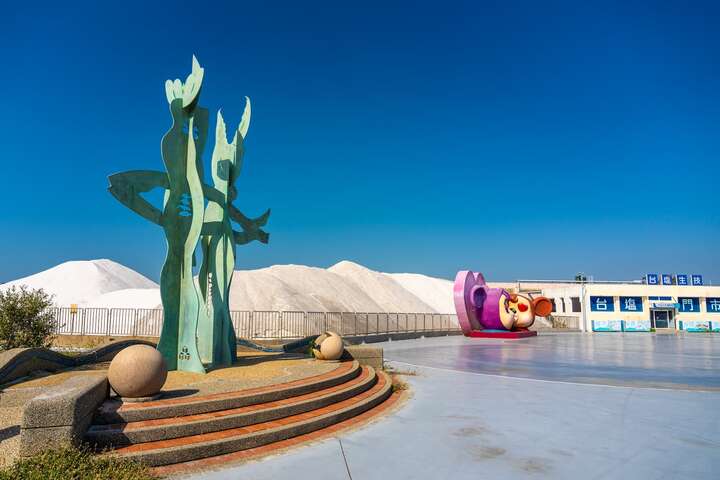Boudai Salt Farm Introduction
Budai began developing salt fields during the Qianlong period of the Qing Dynasty. In the third year of the Daoguang era, the wealthy salt merchant Wu Shangxin further established the Yancheng Bajia, laying the foundation for Budai's salt production industry. During the Japanese colonial period, Budai's salt fields became more mature, making Budai Port an important salt transportation hub, exporting salt to China and Japan. The bright white salt fields once held a "platinum" level industrial status. Like salt fields in other regions, manual salt harvesting has almost entirely been replaced by mechanized salt production, leading to the decline of Budai's salt industry. The once-bustling salt fields are now devoid of salt harvesting activities, and the small trains that used to traverse the salt fields have long retired. The entrance monument to the Budai Salt Mountain, titled "Millennium Budai," was designed over two months by internationally renowned sculptor Li Liangren, who made several trips back to his hometown to integrate creativity with the inspiration drawn from history and memory. Standing nearly seven meters tall with a base width of five meters, the entire piece is composed of copper plates arranged in wave-like lines, hand shapes of sails, and streamlined wing tops, symbolizing the ocean, sunlight, warmth, and life. The bronze sculpture features abstract representations of Budai’s specialties, including fish, salt, oysters, and crabs, as well as the sun that crystallizes seawater into salt. The light and shadow changes generated from the perforations of the artwork infinitely extend the viewer's imagination and perspective. (Source: Newidea No. 190, by Wu De-liang) Taiwan Salt Biotech Plant No. 3



























